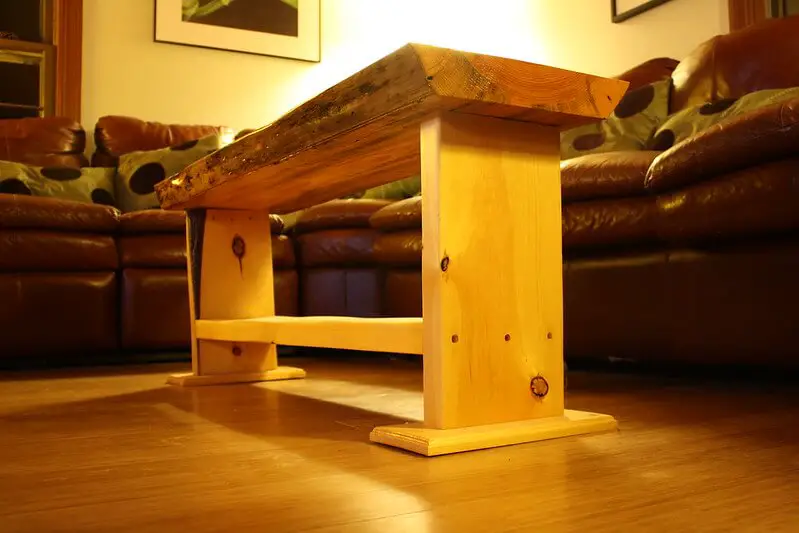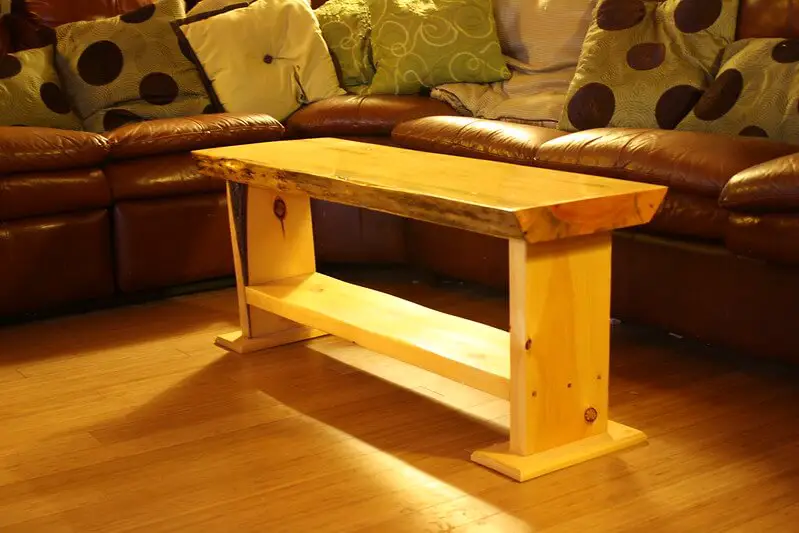Warm satin polyurethane has a characteristic hue that differentiates it from regular satin. While standard satin is often without any extravagant luster, a warm satin polyurethane results in a yellowish or golden hue which becomes more pronounced as the finish ages. Therefore, warm satin results in a more lively luster depending on the type and color of the wooden surface for a more desirable look.
Next read: Best exterior polyurethane
What is a warm gloss polyurethane?
Warm gloss polyurethane has a characteristic shiny golden or yellow luster that highlights the enhances the natural hue of the wooden surface. This polyurethane product possesses protective characteristics such as scratch, dust, and stain resistance.
Moreover, the unique formulation helps protect against ultraviolet radiation, moister, mold, mildew, and stains when applied to exterior use.
Additionally, it possesses high durability as its effects can be trusted to last very long. The uniqueness of warm gloss polyurethane lies in its appearance. The conspicuous yellowish or golden hew is enhanced by the poly’s ability to reflect considerable light. The luster is quite appealing to the eye and is improved with time.
Warm satin vs. clear satin polyurethane
The choice between warm and clear satin is solely dependent on individual preference.
While both polyurethane products provide excellent protective qualities such as protection against abrasive actions like scratches or harsh weather conditions such as intense ultraviolet radiation, the difference is primarily exhibited in the appearance of the finishes.
Clear satin polyurethane dries clear, highlighting the natural hue of the wooden surface. Consequently, it is the better choice to preserve the natural rustic look of the wooden surface.
On the other hand, as mentioned previously, warm satin polyurethane is suitable when one wants to achieve a more highlighted look on the wooden surface. The yellow hue that results and deepens with aging produces a distinguished look that is more pleasing to the eye than clear satin polyurethane.
Minwax warm satin vs. clear satin: product comparison
Both Minwax Warm Satin and Minwax Clear Satin are easy to apply and dry quickly. They are also suitable for use on interior wood surfaces. The main difference between the two is the color and the level of transparency. Warm Satin adds a warm, golden color to the wood, while Clear Satin does not alter the natural color of the wood.
Read Next
• Polyurethane Sheen Comparison
• Satin vs Semi-Gloss
• Satin or Semi-Gloss for Cabinets
• Best Oil-Based Polyurethane
• How Long Does Polyurethane Take to Dry?
Matte or satin polyurethane for furniture/table
The choice between matte and satin for furniture such as a table boils down to the protective and aesthetic qualities desired. Matte polyurethane possesses excellent protection for your furniture as consideration is drawn from the appeal due to its appearance.
Sheen: matte vs satin poly
Moreover, the polyurethane product that contains the most flattening paste has the least amount of sheen. While this does little to enhance your wooden table’s hue, it is a significant advantage in durability and maintenance.

See polyurethane sheen comparison
Maintenance: matte vs satin poly
Maintenance of a table finished with a matte polyurethane is less frequent than that finished with satin polyurethane.
This is because matte finish polyurethane is better at hiding faults and other blemishes obtained by the table with time, such as dust and scratches. Moreover, using matte polyurethane on your furniture is more suitable for a home application with several children and pets.
On the other hand, satin polyurethane would be more suitable for your furniture if looks are more important than durability.
Matte vs satin on furniture: verdict
Therefore, satin is ideal in fewer traffic applications, such as furniture that experience considerably less traffic, such as households that do not have small children or pets. Satin-finished furniture is more likely to need frequent maintenance than matte since its higher level of sheen means that dirt, stains, and scratches are more conspicuous.
Hence, satin polyurethane on furniture, although better looking as it enhances the color of the wood, is more likely to need frequent clean-ups and maintenance.
More on poly
summary
In conclusion, warm satin polyurethane is a great option for those looking for a low-gloss finish that still offers a level of durability and protection for their wood surfaces. The warm undertone of the finish adds a touch of richness and depth to the natural color of the wood, making it a popular choice for furniture, flooring, and cabinetry.
It is important to keep in mind that warm satin polyurethane may not be as resistant to scratches and stains as semi-gloss or gloss finishes, so it may require more frequent maintenance. However, if you are looking for a subtle, natural look with a touch of warmth, warm satin polyurethane may be the perfect choice for your project.
